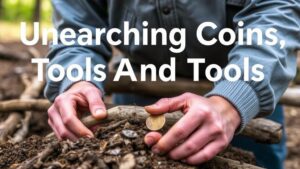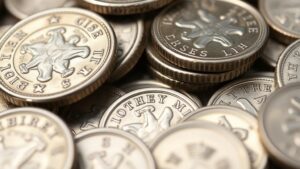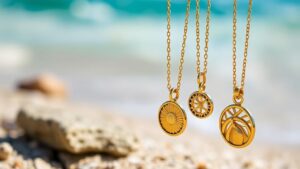Unearthing Coins From Buried Time Capsules in Public Parks
Unearthing Coins From Buried Time Capsules in Public Parks
The phenomenon of burying time capsules has become a symbolic gesture of cultural preservation, reflecting a snapshot of society at a particular moment. Public parks, as communal spaces, frequently serve as ideal locations for these capsules. Among the various items hidden within these buried treasures, coins often emerge, providing significant insights into both historical context and the evolution of currency. This article explores the significance, methodologies, and implications of unearthing coins from buried time capsules in public parks.
The Significance of Time Capsules
Time capsules serve various purposes, from commemorating events to preserving artifacts for future generations. Typically buried by community groups, schools, or municipalities, they encapsulate a blend of historical and cultural significance. The inclusion of coins, in particular, is notable for several reasons:
- Cultural Representation: Coins often reflect the economic conditions, values, and design aesthetics of the time they were minted.
- Historical Context: The act of examining coins can provide insights into shifts in trade, currency system changes, or sociopolitical upheavals.
- Community Memory: They serve as a tangible link to the past, enhancing communal identity by preserving shared history.
Unearthing coins from time capsules typically involves a series of organized steps, ensuring respect for the integrity of the find and the historical context of the items. following methodologies are commonly employed:
- Research and Documentation: Prior to excavation, thorough research should be conducted to understand the specific location, historical timelines, and any previous documentation related to the buried capsule.
- Ground Penetrating Radar (GPR): This non-invasive technology can identify buried structures or containers, minimizing disruption to the surrounding area.
- Excavation Techniques: If a capsule is confirmed, careful excavation techniques, such as hand digging or small-scale machinery, are employed to access the capsule without damaging its contents.
Case Studies: Successful Discoveries
Several notable case studies illustrate the successful unearthing of coins from time capsules, shedding light on their historical significance:
- Time Capsule in New Yorks Central Park (1996): During a park renovation, a 1939 time capsule was discovered containing coins from the New York Worlds Fair. The capsule included not only coins but also magazines, toys, and letters, representing the culture of the era.
- Lincoln Memorial Capsule (2015): Upon restoration efforts, a time capsule from 1922 was uncovered near the Lincoln Memorial. It housed coins alongside various memorabilia, providing critical insights into the values and economic conditions of post-World War I America.
The Implications of Coin Discovery
The discovery of coins within time capsules carries profound implications, extending beyond mere archaeology or numismatics:
- Educational Opportunities: These discoveries can serve as pivotal teaching moments, where schools or organizations can discuss economics, history, and the significance of material culture.
- Community Engagement: Excavations can foster community spirit, engaging local citizens in historical preservation, public lectures, or interactive workshops.
- Cultural Reflection: Coins provide a unique reflection of societal priorities and economic practices, allowing analysts to gauge shifts over time and engage with broader socio-economic factors.
Challenges and Ethical Considerations
While the unearthing of time capsules can be an exciting discovery, it also presents challenges and ethical dilemmas:
- Preservation Ethics: Curators and archaeologists must consider how best to preserve items post-extraction, ensuring their longevity while still providing public access.
- Historical Significance vs. Public Sentiment: Balancing the desire for public display against historical accuracy can lead to conflicts, often requiring sensitive negotiation with local communities.
Conclusion and Takeaways
Unearthing coins from buried time capsules in public parks offers a unique intersection of history, archaeology, and community engagement. As these discoveries are made, they bolster local identity and contribute to a richer cultural narrative. Moving forward, educational institutions, archaeologists, and community groups should collaborate to enhance understanding and appreciation for these artifacts.
Actionable Takeaways:
- Communities should consider creating more time capsules as a means of preserving local culture.
- Historical organizations can implement educational programs that engage citizens in the process of discovery and preservation.
- Future excavations should prioritize ethical guidelines to ensure the proper handling of artifacts.


